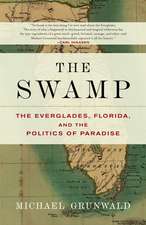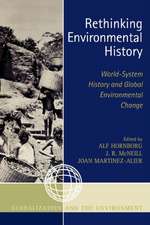The Fragmented Forest: Island Biogeography Theory and the Preservation of Biotic Diversity
Autor Larry D. Harrisen Limba Engleză Paperback – 30 sep 1984
In this poineering application of island biogeography theory, Harris presents an alternative to current practices of timber harvesting.
"Harris pulls together many threads of biological thinking about islands and their effect on plant and animal survival and evolution. He weaves these threads into a model for managing forest lands in a manner that might serve both our short-term economic and social needs as well as what some people feel is our ancient charge to be steward of all parts of creation."—American Forests
Winner of the 1986 Wildlife Society Publication Award
"Harris pulls together many threads of biological thinking about islands and their effect on plant and animal survival and evolution. He weaves these threads into a model for managing forest lands in a manner that might serve both our short-term economic and social needs as well as what some people feel is our ancient charge to be steward of all parts of creation."—American Forests
Winner of the 1986 Wildlife Society Publication Award
Preț: 231.00 lei
Nou
Puncte Express: 347
Preț estimativ în valută:
44.21€ • 45.98$ • 36.50£
44.21€ • 45.98$ • 36.50£
Carte tipărită la comandă
Livrare economică 15-29 aprilie
Preluare comenzi: 021 569.72.76
Specificații
ISBN-13: 9780226317649
ISBN-10: 0226317641
Pagini: 230
Dimensiuni: 137 x 213 x 18 mm
Greutate: 0.23 kg
Ediția:1
Editura: University of Chicago Press
Colecția University of Chicago Press
ISBN-10: 0226317641
Pagini: 230
Dimensiuni: 137 x 213 x 18 mm
Greutate: 0.23 kg
Ediția:1
Editura: University of Chicago Press
Colecția University of Chicago Press
Cuprins
Foreword by Kenton R. Miller
Preface
Part 1: Problem Setting
1. Introduction
2. The Approach
Part 2: Current States of Nature
3. The Natural Forest Community
High Latitude and Mediterranean Climate
Canopy Height and Massivity of Forest
Conifer Dominance
Highly Dissected Topography
Structural Characteristics
The Unique Combination of Characteristics
4. Forest Trends and Patterns
Ownership
Depletion
Current Distribution
Miscellaneous Changes
Focus on Willamette National Forest
5. Animal Community Characteristics
Larry D. Harris and Chris Maser
General Characteristics
Unique Faunal Characteristics
Ordination of Species
Richness vs. Diversity
Part 3: Analysis of Alternatives
6. The Applicability of Insular Biogeography
Two Types of Islands
Species-area Relations
Local Extinction and Community Change
Isolation Effects
The Distinction between True Island Biogeography and Habitat Islands
7. Genetic Resources and Biotic Diversity
Larry D. Harris, Michael E. McGlothlen, and Michael N. Manlove
Endangered Species
Within-species Diversity
Faunal Preservation vs. Maximum Species Richness
The Equivalence of Species
Ecosystems and the Landscape Mosaic
8. Evaluation of Alternative Approaches
The Total Area Requirement
Effective Habitat Island Size
Size vs. Number
Interisland Distance
Mammal Home-range Sizes and Travel Distances
Part 4: A Planning Strategy
9. A System of Long-rotation Islands
Long-rotation Islands vs. Old-growth Islands
Long-rotation Island Characteristics
Island Size Frequency Distribution
Spatial Distribution of Islands
Travel Corridors and Connectivity of Islands
10. Fitting the System to the Landscape
11. Summary and Characteristics of the Island Archipelago Approach
Appendix 1: Scientific Names of Species Cited in Text
Appendix 2: Volume of Timber Cut from the Willamette National Forest, 1905-81
Appendix 3: Approximate Acreage Cut from Difference Elevational Zones
Appendix 4: Forty-five Terrestrial Vertebrate Species of the Western Cascades That Require Cavities, Snags, and Fallen Logs
Appendix 5: List of Research Natural Areas and Comparable Preserves in Western Oregon and Western Washington
Literature Cited
Author Index
Species Index
Subject Index
Preface
Part 1: Problem Setting
1. Introduction
2. The Approach
Part 2: Current States of Nature
3. The Natural Forest Community
High Latitude and Mediterranean Climate
Canopy Height and Massivity of Forest
Conifer Dominance
Highly Dissected Topography
Structural Characteristics
The Unique Combination of Characteristics
4. Forest Trends and Patterns
Ownership
Depletion
Current Distribution
Miscellaneous Changes
Focus on Willamette National Forest
5. Animal Community Characteristics
Larry D. Harris and Chris Maser
General Characteristics
Unique Faunal Characteristics
Ordination of Species
Richness vs. Diversity
Part 3: Analysis of Alternatives
6. The Applicability of Insular Biogeography
Two Types of Islands
Species-area Relations
Local Extinction and Community Change
Isolation Effects
The Distinction between True Island Biogeography and Habitat Islands
7. Genetic Resources and Biotic Diversity
Larry D. Harris, Michael E. McGlothlen, and Michael N. Manlove
Endangered Species
Within-species Diversity
Faunal Preservation vs. Maximum Species Richness
The Equivalence of Species
Ecosystems and the Landscape Mosaic
8. Evaluation of Alternative Approaches
The Total Area Requirement
Effective Habitat Island Size
Size vs. Number
Interisland Distance
Mammal Home-range Sizes and Travel Distances
Part 4: A Planning Strategy
9. A System of Long-rotation Islands
Long-rotation Islands vs. Old-growth Islands
Long-rotation Island Characteristics
Island Size Frequency Distribution
Spatial Distribution of Islands
Travel Corridors and Connectivity of Islands
10. Fitting the System to the Landscape
11. Summary and Characteristics of the Island Archipelago Approach
Appendix 1: Scientific Names of Species Cited in Text
Appendix 2: Volume of Timber Cut from the Willamette National Forest, 1905-81
Appendix 3: Approximate Acreage Cut from Difference Elevational Zones
Appendix 4: Forty-five Terrestrial Vertebrate Species of the Western Cascades That Require Cavities, Snags, and Fallen Logs
Appendix 5: List of Research Natural Areas and Comparable Preserves in Western Oregon and Western Washington
Literature Cited
Author Index
Species Index
Subject Index







